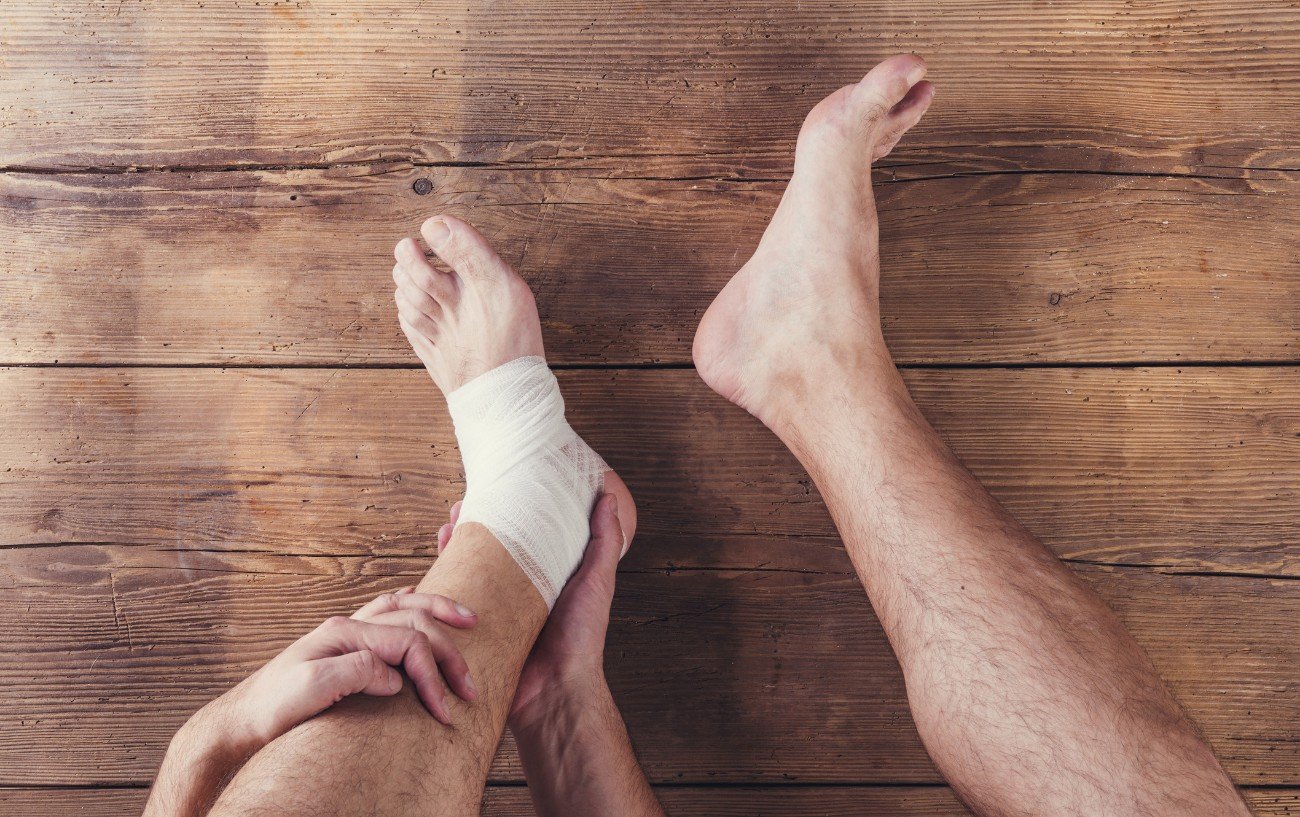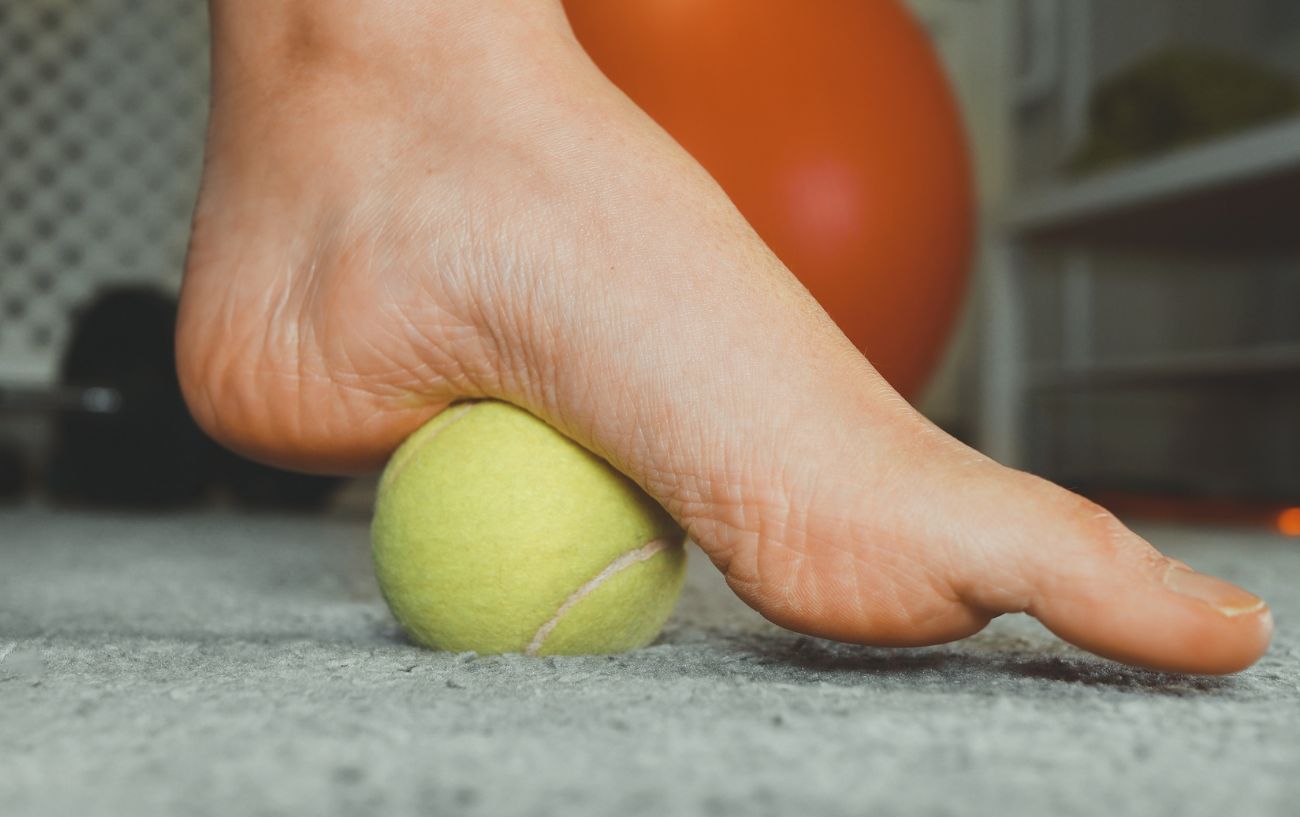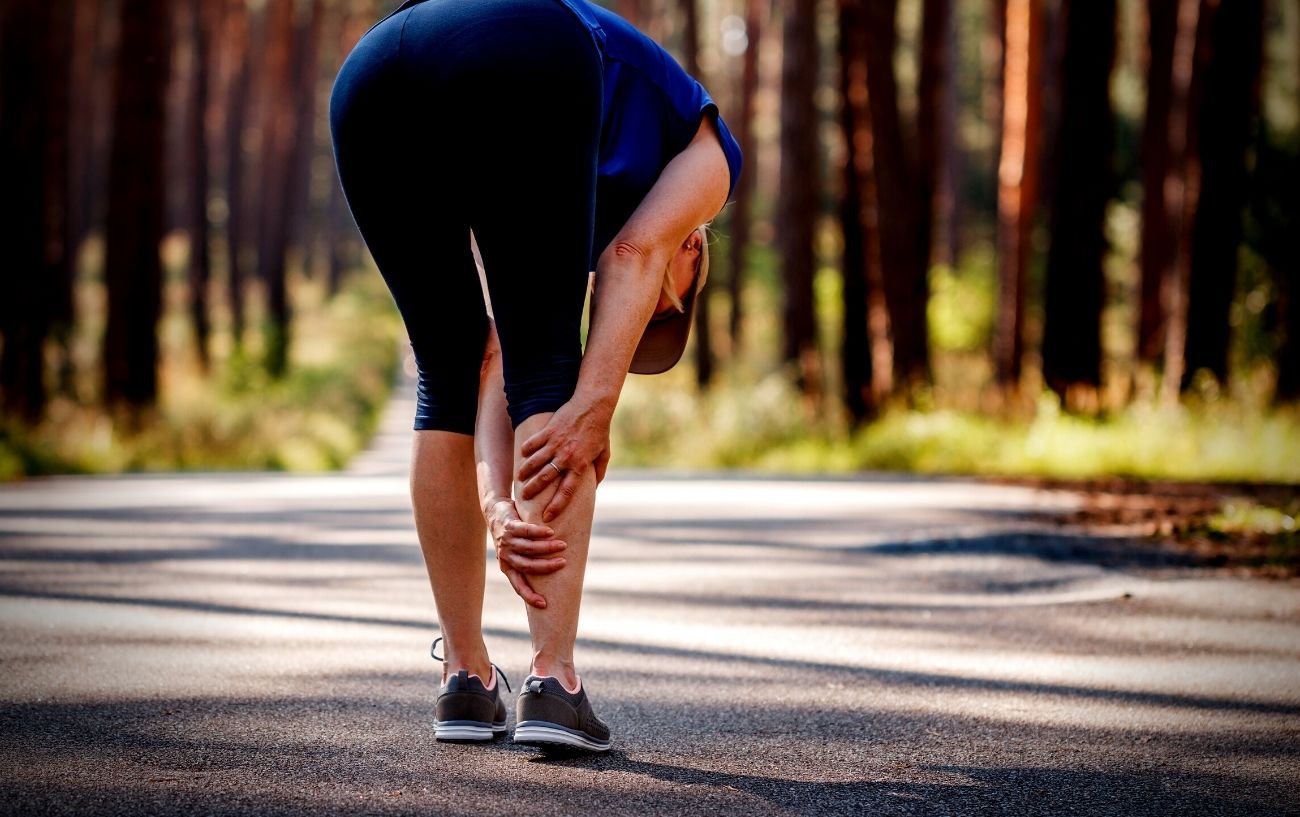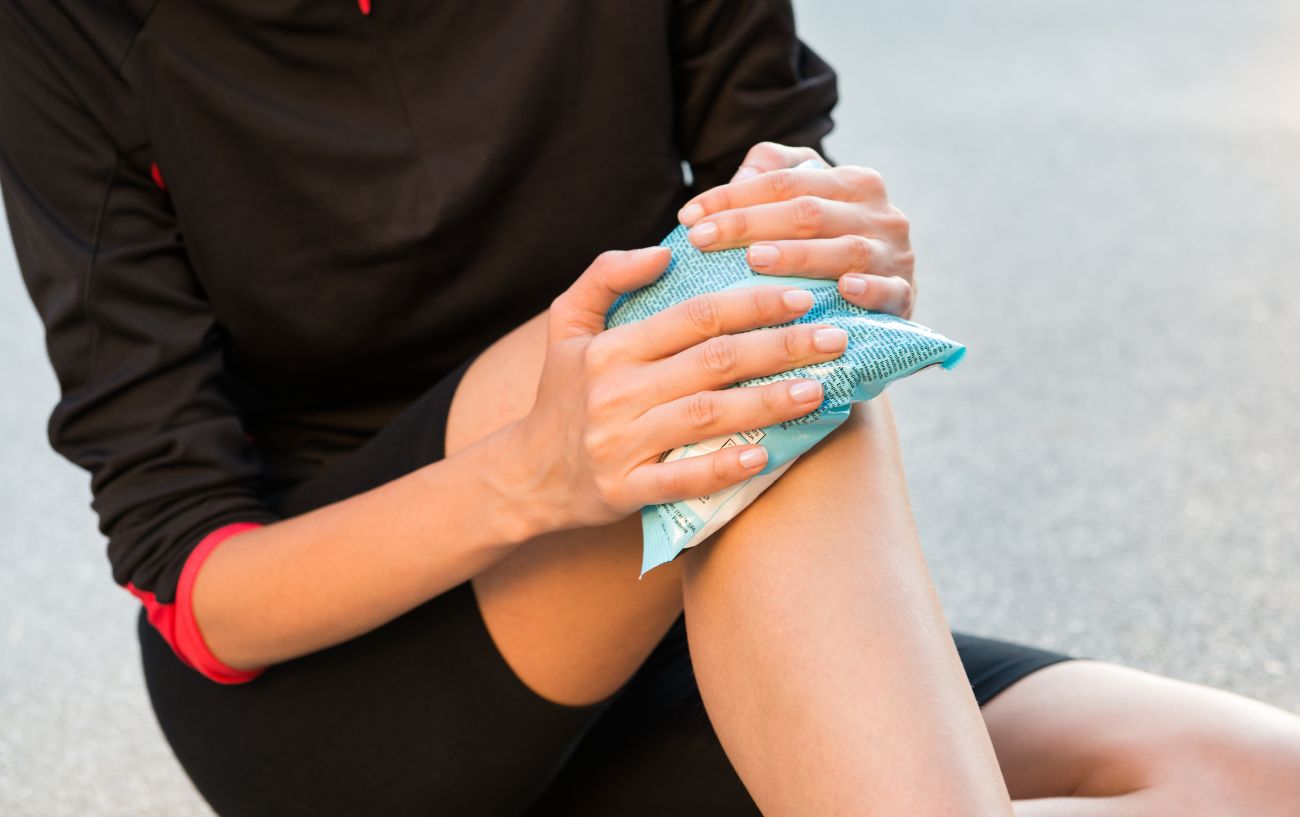If you’re a runner, chances are you’ve either dealt with plantar fasciitis yourself or know someone who has. It’s one of the most common injuries I see in runners — affecting around 4.5% to 10% each year — and trust me, it can be incredibly stubborn.
Plantar fasciitis isn’t just painful; it can throw your entire training plan off course. One week you’re feeling great in all of your workouts, and the next, you’re limping out of bed wondering what went wrong. I get how frustrating that is.
The good news? With the right steps, you can usually get ahead of it — or at least keep it from getting worse. And even if you’re in the thick of it right now, a smart, well-structured rehabilitation plan can absolutely get you back to running pain-free.
In this guide, I’ll walk you through what plantar fasciitis actually is, what the latest science says, and — most importantly — what you can do about it.

What Is Plantar Fasciitis?
The plantar fascia is made up of three bands of fibrous connective tissue that are inserted into the heel bone (calcaneus).
This band of tissue runs forward to the base of the toes and forms a robust mechanical linkage between the heel and the toes. It is likened to both tendon and ligament, and it contributes to the “spring” of the foot.
Plantar fasciitis is a musculoskeletal disorder primarily affecting the fascial enthesis (the site where a tendon and ligament inserts into a bone).
Plantar fasciitis is not primarily inflammatory and, therefore, should be regarded as fasciopathy. The suffix –itis generally refers to inflammation, so plantar fasciitis is a bit of a misnomer,1N;, L. H. K. (n.d.). Plantar fasciitis: A degenerative process (fasciosis) without inflammation. Journal of the American Podiatric Medical Association. https://pubmed.ncbi.nlm.nih.gov/12756315/ and instead, Chronic Plantar Heel Pain (CPHP) is more accurate.
What Are The Causes Of Plantar Fasciitis?
The root cause of plantar fasciitis is currently unknown, but it is a common injury for runners who increase their mileage too quickly or are just getting started.
It is most often characterized as the thickening or degeneration of the collagen fibers in the plantar fascia.
It has historically been assumed that it is caused by excessive tensile loading at the calcaneal enthesis.
However, more recently, histological studies2Wearing, S. C., Smeathers, J. E., Urry, S. R., Hennig, E. M., & Hills, A. P. (2006). The pathomechanics of plantar fasciitis. Sports Medicine, 36(7), 585–611. https://doi.org/10.2165/00007256-200636070-00004 (study of tissues and cells under a microscope) have shown that bending, shear, and compression forces around the heel attachment may be at least as important.
A summary of the risk factors is as follows:
- Increased weight or obesity – A BMI of 25-30 approximately doubles the occurrence of CPHP.3Irving, D. B., Cook, J. L., & Menz, H. B. (2006). Factors associated with chronic plantar heel pain: a systematic review. Journal of Science and Medicine in Sport, 9(1–2), 11–22. https://doi.org/10.1016/j.jsams.2006.02.004
- Increased age – The enthesis is brittle and therefore susceptible, especially with aging, which may explain why prevalence is particularly high among masters runners.
- Decreased ankle dorsiflexion – Occurrence was observed to triple if passive ankle joint dorsiflexion is less than 10°.
- Decreased mobility in the extension of the big toe.
- Long periods of standing, especially on hard surfaces – It increases by 3.6 times in weight-bearing occupations.4Sahin, N., Oztürk, A., & Atıcı, T. (2010). Foot mobility and plantar fascia elasticity in patients with plantar fasciitis. Acta Orthopaedica Et Traumatologica Turcica/Acta Orthopaedica Et Traumatologica Turcica, 44(5), 385–391. https://doi.org/10.3944/aott.2010.2348
- Presence of a heel spur – 89% of a symptomatic CPHP cohort had an associated calcaneal bone spur.5Johal, K., & Milner, S. (2012). Plantar fasciitis and the calcaneal spur: Fact or fiction? Foot and Ankle Surgery, 18(1), 39–41. https://doi.org/10.1016/j.fas.2011.03.003
- Wear shoes with poor cushioning
- Foot mechanics– such as high arches or flat feet.
Out of all athletic populations, long-distance running is the activity most often associated with plantar fasciitis.
Head feeling a little foggy? Mine too. We will begin to unpack these causes with possible solutions when we get to the exercises.

What Are The Symptoms?
Symptoms will vary from runner to runner, but most runners with plantar fasciitis complain of heel pain when pressure is put on the foot. This foot pain can be dull, burning, or stabbing.
Most commonly, the pain is found around the heel, but sometimes the pain will radiate outwards on the bottom of your foot from the heel area towards the toes.
The pain is typically the worst when you get out of bed in the morning, and as the muscles in your feet warm up, it should begin to subside in intensity. However, pain can also spike after periods of sitting.
If pain is consistent when you are resting, it is common for the pain to be at its worst during the evening after performing activities during the day.

Can You Run With Plantar Fasciitis?
Running with plantar fasciitis is not straightforward and depends on your current goals.
In my clinic, I look analyze the following:
- Why is someone running? Is it for fitness, race, or mental health?
- Does their work require them to be on their feet? Can they afford to miss work?
- Do they have other ways to exercise?
- Does the cause of the pain have a clear origin, or is it nuanced?
Ask yourselves these questions. The likelihood is that if you’re suffering from acute plantar fasciitis, your body could probably do with some rest, and rest doesn’t mean doing nothing.
However, can you run with plantar fasciitis? Yes, you can, so long as the plantar fasciitis pain is relatively low/mild. Injury isn’t straightforward, and the body can often deal with low loads even when compromised.
A couple of red flags that mandate we cut the run short are:
- If the pain starts relatively low but gradually increases until it is severe.
- Pain persists at a slightly inflated level a day after you run. This is often an indication that the run caused excess damage.
It’s important to bear in mind that running with plantar fasciitis may slow the healing process and prolong the course of the injury.
The most common mistake returning runners make is jumping back into running too quickly.
It’s hard to say explicitly how long you may need to rest, as it depends upon the severity of the injury. However, if you are suffering from acute plantar fasciitis, then refraining from running for four weeks is a good place to start.
If the symptoms are mild and don’t deteriorate with exercise, proceed.
Just don’t go smash some hill sprints or head out on your longest run to date…
Rest and recovery are not a sentence; following a rehabilitation program requires active participation and can lead to the enjoyment of many different exercise modalities.
Can’t run? Get out on a bike, head to the local swimming pool, or give the gym a try.
When trying to treat your plantar fasciitis, you have probably considered many different treatment options, such as orthotics, shoe inserts, heel pads, extracorporeal shock wave therapy, taping, night splints, NSAIDs such as ibuprofen, supportive shoes, and even steroid injections.
However, as a physical therapist, I strongly suggest beginning with strengthening and stretching exercises as your first step.

What Are The Best Exercises For Treatment?
It is essential to identify how acute your plantar fasciitis is. During the acute stage, there can be inflammation within the fascia, and progressing straight to stretching may aggravate your pain.
If it does, focus on settling your symptoms with aids such as over-the-counter non-steroidal anti-inflammatory drugs and the RICE (Rest, Ice, Compression, Elevation) principle. When the pain becomes more manageable, start to incorporate stretching and strengthening.
Any rehabilitation protocol should follow the principle of progressive overload. Progressive overload is the gradual increase of load and stress on the musculoskeletal system.
Rehab should be comfortable; at no point do you need to put the body under excessive stress. As we continue to exercise, we will increase our body’s capacity for load/stress.
How much load your body undergoes is relative to how your body is feeling. If you are in the early stages of rehabilitation, it’s going to feel slow, and it should feel easy.
Take your time; progression is a process. What was an uncomfortable exercise two weeks ago may now feel comfortable. That is our capacity increasing.
A growing body of evidence suggests that incorporating a stretching program focusing on the calf, Achilles tendon, and, more specifically, aimed at the plantar fascia can help recovery.
Additionally, high-load strength training may aid in a quicker reduction in pain and improve function.
So, let us take a look at some examples!
#1: Toe Extension
The toe extension is a simple but very effective stretch for plantar fasciitis.
Sit in a chair with the affected foot crossed over the unaffected leg. Hold your toes with the fingers of one hand and dorsiflex your toes.
You should experience a stretch in the arch of your foot and calf muscle. With your free hand, try massaging the arch of your foot.
Perform 10 Sets, 10-second hold each time of this plantar fascia stretch.
#2: Gastrocnemius Stretch
This is a great calf stretch for plantar fasciitis. This gastrocnemius stretch is very simple and can be done virtually anywhere, as long as you have a wall to lean into.
Stand facing the wall, place your hands on it, and straighten your back leg. Make sure both of your feet are firmly planted on the ground, pointing in the direction of the well. Your front leg should be slightly bent.
As you lean toward the wall, you will begin to feel a stretch in the calf muscle of your back leg.
Hold this pose for 30 seconds, and then relax.
3 sets, 30-second hold
#3: Tennis Ball Roll
For this exercise for plantar fascia pain, grab a tennis ball or another object of similar size.

While standing, place the ball under your affected foot.
Apply light pressure onto the ball and begin rolling the ball back and forth under the arch of your foot.
3 minutes of rolling twice per day
You could also roll your foot over a frozen water bottle for ice and rolling all in one!
#4: Toe Curls with a Towel
For this plantar fascia release exercise, you will need to put a small towel on the floor and place your foot on it. You can do this either standing or sitting in a chair.
With your affected foot, scrunch your toes on the towel and try to pull it toward you. Hold the contraction for 2 seconds.
Relax your toes and let the towel go.
3 Sets, 10-15 repetitions
#5: Heel-Raise
Stand on a step with a towel under your toes to activate the windlass-mechanism.Bolgla, L. A., & Malone, T. R. (2004, March 1). 6Plantar fasciitis and the Windlass mechanism: a biomechanical link to clinical practice. PubMed Central (PMC). https://www.ncbi.nlm.nih.gov/pmc/articles/PMC385265/#:~:text=The%20windlass%20mechanism%20describes%20the,placed%20on%20the%20plantar%20fascia. Ensure your toes are maximally dorsiflexed (pointing towards the ceiling).
Rise for a three-second concentric phase (going up)
Hold for a two-second isometric phase (pause at the top of the exercise)
Lower for a three-second eccentric phase (coming down).
Progression: Go from 2 feet on the step to 1 foot on the step.
3 Sets, 10-12 repetitions
#6: Bridges On A Step
Begin this exercise by lying on the floor with your toes on the edge of a step. Have your arms either across your chest or by your side.
Slowly lift your hips off the floor, contracting the glutes and pushing through the toes. Aim to maintain the arch of the foot. Then, slowly lower yourself back down.
Progression: Go from 2 feet on the step to 1 foot on the step.
3 Sets, 10-15 repetitions
#7: Split Squat On A Step
Standing in a split squat stance with the toes on the edge of a step and the other foot behind the knee.
Slowly lower the back knee until it is just above the floor. Raise the back knee up, aiming to maintain the arch of the front foot
3 Sets, 8-12 repetitions
Adding these strengthening and stretching exercises into your routine can help control or prevent chronic plantar fasciitis.
Physical therapy is a great way to combat the symptoms and feel pain relief from this running injury.
If these symptoms are not spot on with what you are experiencing, you may want to consider looking at other possible causes, such as stress fractures. Check out this next guide to complete a self-physical exam to see if you may have one:
Our articles are not designed to replace medical advice. If you have an injury, I recommend seeing a qualified health professional.












